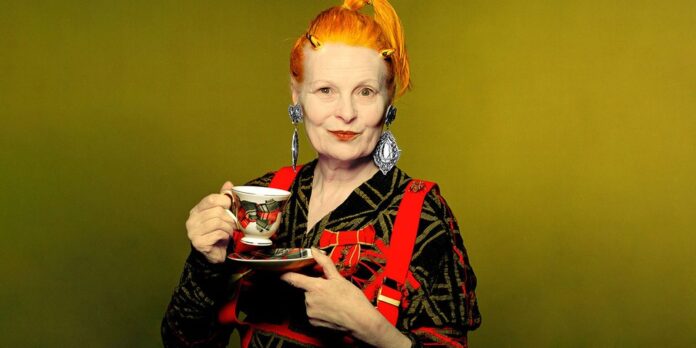The death of popular British fashion designer and style icon Vivienne Westwood has been announced to the dismay of score of fashion buffs and enthusiasts from around the globe.
Vivienne passed away at the age of 81, peacefully, surrounded by her family, at her home in London on Thursday, according to an official statement from her eponymous company.
The death of the designer considered to be one of the original architects of the punk fashion look was announced on the Instagram page of her fashion brand.
“Vivienne continued to do the things she loved, up until the last moment, designing, working on her art, writing her book and changing the world for the better. She led an amazing life. Her innovation and impact over the last 60 years has been immense and will continue into the future,” continued the post.
As a parting shot we highlight nine things you may not know about the late British fashion designer and style icon.
READ ALSO: See four fashion trends that will take over 2023 (Photos)
1.) Vivienne Isabel Swire was born April 8, 1941, in Cheshire, England.
2.) Her father, Gordon, was a grocer and then a storekeeper in an aircraft factory, and her mother, Dora, worked in cotton mills.
3.) She married Derek Westwood, a home appliance exec, in 1962 and had a son, Benjamin, but they divorced three years later.
4.) She met McLaren and they had a son, Joseph, in 1967. Four years later, McLaren opened a shop, Let It Rock (at the location that would become SEX), and Westwood designed clothes to fill it.
5.)Together, they eventually launched a series of fashion collections before Westwood went out on her own in the mid-1980s.
6.) Her signature aesthetic evolved, mixing reappropriated tartan patterns with safety pins, tulle and corsets in looks that parodied the British upper class.
7.) Westwood’s “Queen of Punk” status was cemented in the 1980s as she created some of her most iconic designs.
8.) Often edgy interpretations of pieces rooted in romantic or historical origins, her modernity was exhibited in collections inspired by everything from swashbucklers.
9.) The inspiration of the 1981 “Pirate” collection she shared with McLaren, to 19th-century crinolines, interpreted as a miniskirt (dubbed “Mini-Crini”) in a 1985 collection, as well as her legendary corset treatments.




